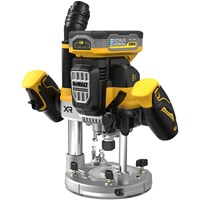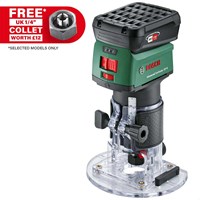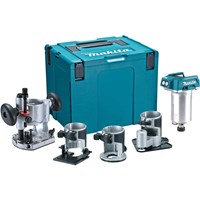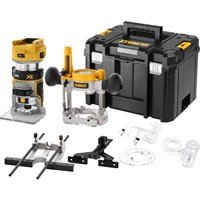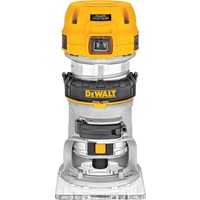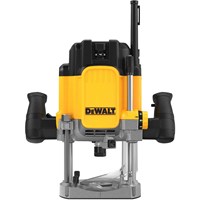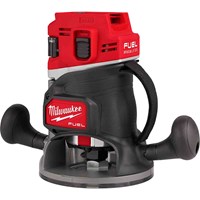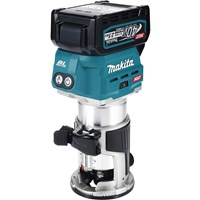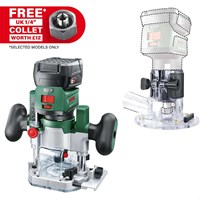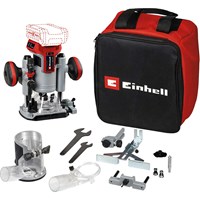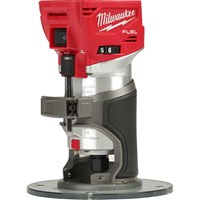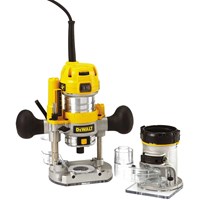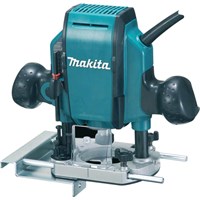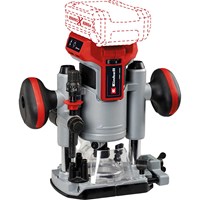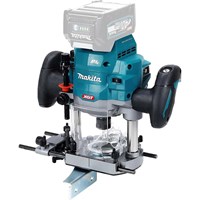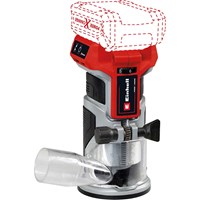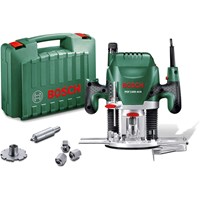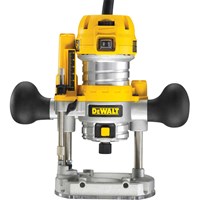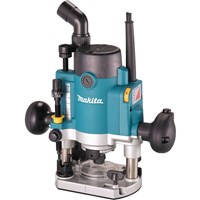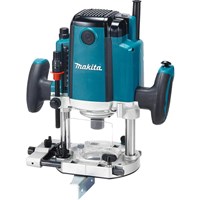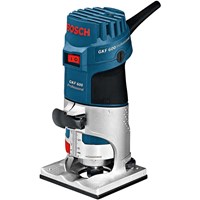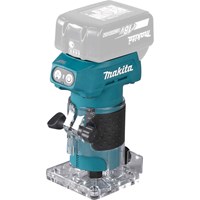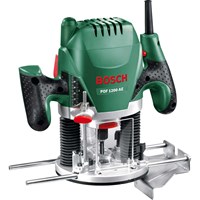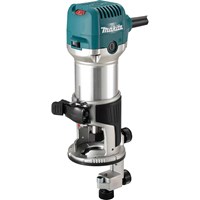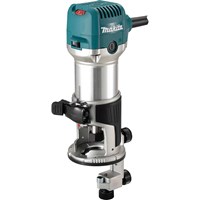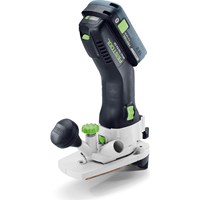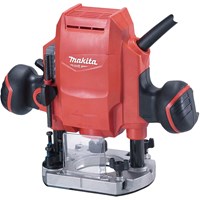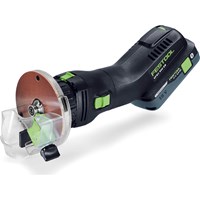Routers & Trimmers
Pay in 3 interest-free payments on purchases from £30-2000 with ![]() . Learn more.
. Learn more.
Bosch ADVANCEDTRIMROUTER 18V-8 P4A 18v Cordless Trim Router with Plunge Attachment
in stock
Einhell Professional TP-RO 18 Li BL 18v Cordless Brushless Plunge and Trim Router Set
in stock
Einhell Professional TP-RO 18 Li BL 18v Cordless Brushless Plunge Router
in stock
Einhell Professional TP-ET 18 Li BL 18v Cordless Brushless Trim Router
in stock
 Loading...
Loading...
End of content
Error - No more pages to load
About Routers & Trimmers
Routers and trimmers are essential power tools for creating professional joinery, decorative edges, and precise woodworking joints. These high-speed machines hold specialist cutters in a collet (typically ¼" or ½") that spin at 10,000-30,000 RPM, enabling everything from simple edge profiling to complex dovetail joints and worktop installations. MyToolShed.co.uk offers a comprehensive range including plunge routers for versatile depth-adjustable work, fixed routers for table-mounting and consistent edge work, compact palm routers for manoeuvrable tasks, and lightweight laminate trimmers for fine finishing operations. Both corded 240v models and cordless battery-powered options are available to suit workshop and site requirements.
Whether you're a professional joiner crafting bespoke cabinetry or a DIY enthusiast tackling home improvements, selecting the right router type makes all the difference. Power outputs range from 500W trimmers for delicate edge work up to 2,400W plunge routers capable of heavy-duty mortising in hardwoods. Many tradespeople invest in multiple machines—perhaps a robust ½" plunge router for demanding applications and a compact trimmer for detailed finishing—to cover the full spectrum of routing tasks efficiently.
Applications
Routers and trimmers serve diverse trades and projects across woodworking and construction:
- Joiners and Carpenters: Door frames, architraves, skirting profiles, and precision joinery
- Kitchen Fitters: Worktop joints, sink cutouts, breakfast bar installations, and scribing
- Cabinet Makers: Housing joints, decorative edge profiles, hinge recesses, and dovetails
- Furniture Makers: Mortise and tenon joints, decorative inlays, and bespoke edge treatments
- Shopfitters: Display units, shelving systems, and retail fixture fabrication
- Window Fitters: Sill trimming, frame rebating, and double-glazing apertures
- DIY Enthusiasts: Home renovations, furniture restoration, and hobby woodworking projects
Choosing The Right Routers & Trimmers
Power and Motor Size: Match wattage to your workload—500-900W trimmers suit edge work and laminate trimming, whilst 1,800W+ plunge routers handle professional kitchen fitting and hardwood joinery with large-diameter cutters.
Collet Size: Quarter-inch collets accommodate lighter trimming tasks, but ½" collets are essential for professional applications, offering superior rigidity and compatibility with heavy-duty cutters. Many ½" routers include reducing collets for ¼" shank bits.
Router Type: Plunge routers provide maximum versatility for mortising and template work. Fixed routers excel when table-mounted. Palm routers offer single-handed control for delicate tasks. Laminate trimmers deliver lightweight manoeuvrability for edge finishing.
Corded vs Cordless: Modern 18V battery platforms from Makita, DeWalt, and Milwaukee offer genuine site performance, ideal where 240v mains access is limited. Corded models provide sustained power for demanding workshop applications.
Essential Features: Variable speed control suits different materials and cutter sizes. Soft start reduces kickback. Micro-adjustable depth mechanisms enable precision. Dust extraction ports maintain visibility and workplace health. MyToolShed.co.uk stocks quality options from budget-friendly brands through to premium professional-grade machines.
Safety Information
Routers operate at extremely high speeds and demand proper safety procedures. Always wear safety glasses or a face shield against ejected wood chips, hearing protection against 85dB+ noise levels, and respiratory protection against fine wood dust. Securely clamp workpieces—never rout unsecured material. Feed against cutter rotation to maintain control. Allow motors to reach full speed before engaging workpieces. Disconnect from 240v mains supply before changing cutters. Keep cutters sharp—blunt bits increase kickback risk. Use RCD protection and ensure extension leads are rated appropriately for router current draw. When table-mounted, use push sticks for small components and never reach over spinning cutters.
Frequently Asked Questions
What's the difference between a router and a trimmer?
Trimmers are compact, lightweight tools (500-900W) with ¼" collets designed primarily for edge trimming and laminate work. Full-size routers offer greater power (1,200W+), larger ½" collets, and plunge mechanisms for demanding applications like mortising and worktop jointing. Many professionals at MyToolShed.co.uk purchase both types for comprehensive capability.
Do I need a ¼" or ½" collet router?
For occasional DIY edge profiling, a ¼" router provides adequate performance. Professional tradespeople—particularly kitchen fitters and joiners—should invest in a ½" router accepting heavy-duty cutters for worktop joints and deep mortising. Many ½" models include reducing collets for ¼" shank cutters, offering maximum versatility.
Can I use my router in a router table?
Yes, most routers can be inverted and table-mounted, transforming them into stationary machine tools for improved precision with small components. Ensure your router has an accessible power switch or fit an external NVR switch to the table for safety. Some manufacturers offer dedicated table-mounting accessories for secure installation.


